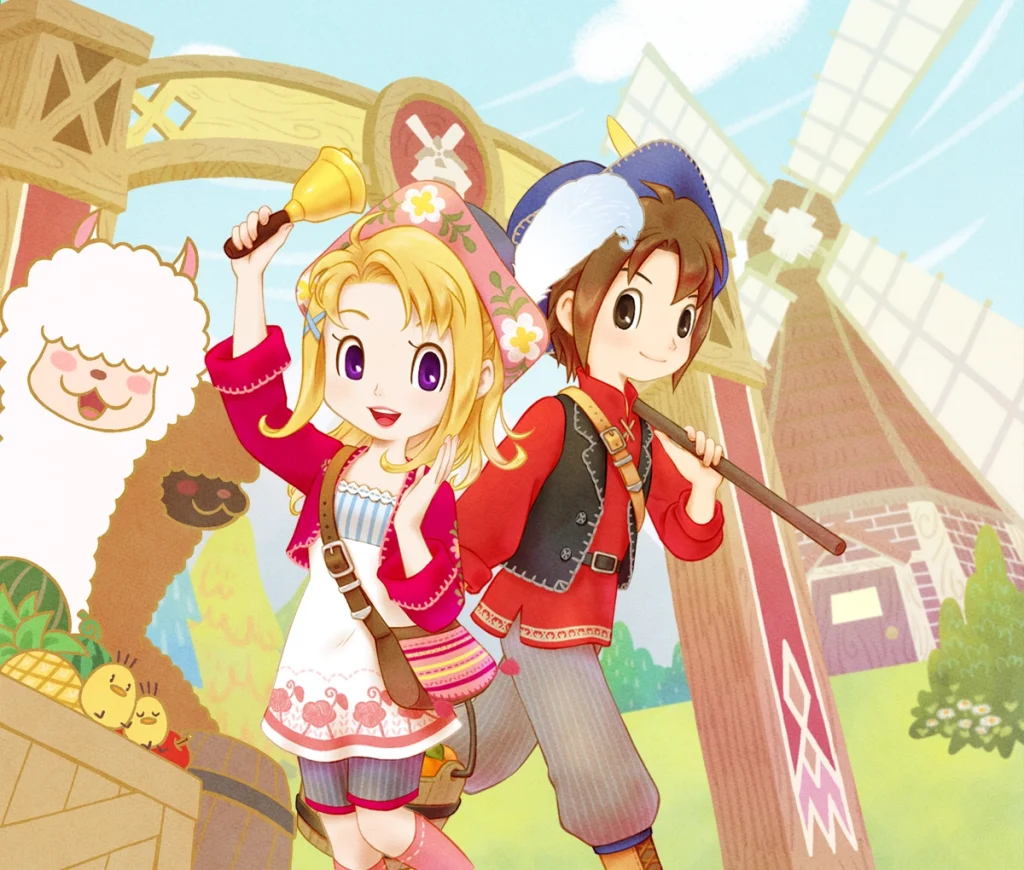Even in a series that’s as much about routine as Story of Seasons, few things are as routine as the shipping box. Put your crops and whatever else in the box and at 5pm every day, like clockwork, along comes someone to collect and pay you. It’s as key a part of the series’ core game loop as sewing seeds and milking cows.
Story of Seasons: Grand Bazaar has no shipping box.
Instead, it has a weekly bazaar—hence the title. Each Saturday is bazaar day, during which you play a shopping minigame to sell your produce. But time and shelf space is limited, so it’s not simply a case of hoarding all your stuff and then just offloading the lot. You get 24 item slots per shift (and two shifts per bazaar day), and each can hold up to 99 of a single item; making the most of this limited vending window adds a layer of strategy. Filling your stall with huge stacks of raw ingredients can be lucrative (early on, especially), but bulk takes longer to sell, so you risk. Premium crafted goods can make bank from quick sales, but a small inventory risks selling out early and leaving potential profit on the table—though that can be helpful, when you reach a point where time is more valuable than money.
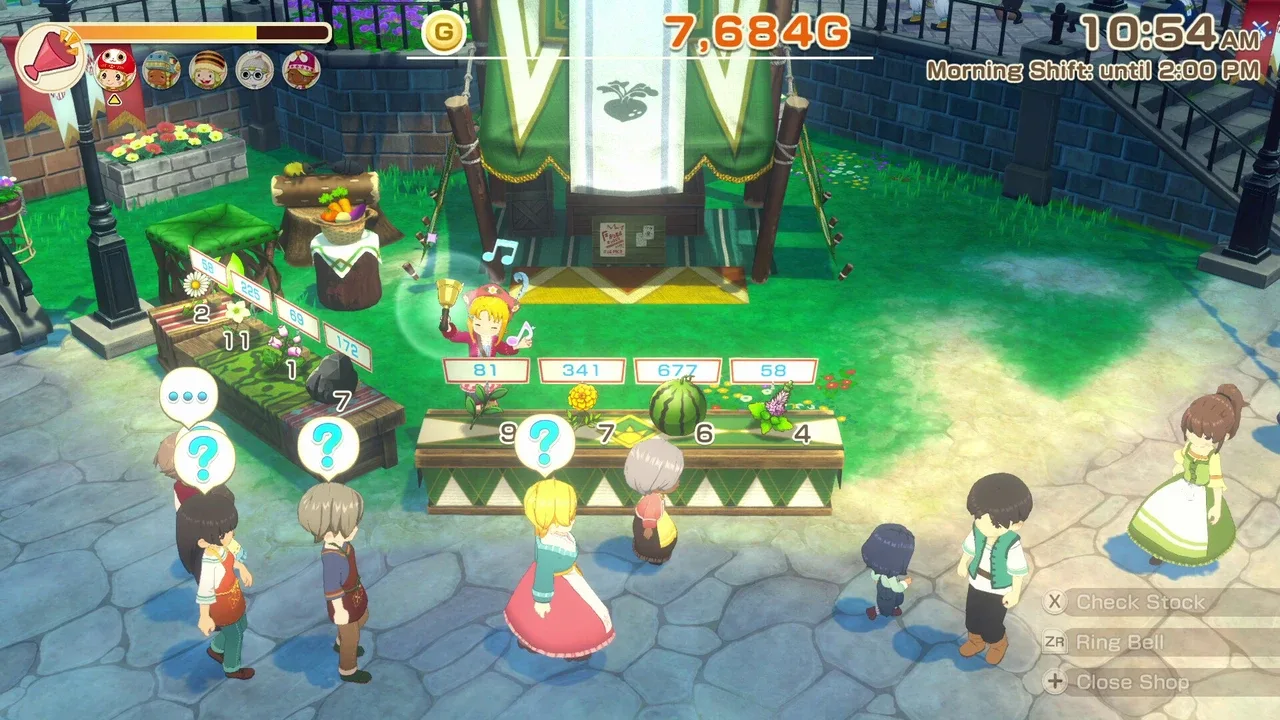
A shop stall instead of a shipping box seems like a minor thing at first glance, but it changes the ebb and flow of the whole game in a fundamental way. For anyone who’s played Harvest Moon: Grand Bazaar (released in 2008 for Nintendo DS, and of which Story of Seasons: Grand Bazaar is a remake), the bazaar might not be groundbreaking, but for anyone who’s new to this style of farm life, it’s a welcome change of pace.
Every other aspect of Grand Bazaar’s design feeds into this rhythm, too. Hoarding crops is actively discouraged by both a limited amount of storage space and a “freshness” system that causes food to go bad if it’s been sitting around for too long. I know I’m not alone in my usual play style for these games being to keep an arbitrary amount of every crop in storage, just in case I need them—though I rarely end up using them. This time around, that approach quickly creates an inventory management nightmare, even before you get into issues of different quality levels and degrees of freshness taking up multiple storage slots. Yes, you can gradually expand your storage capacity, but without the ability to freely build extra boxes, there’s always a hard limit.
That might sound like a nightmare for hoarders, and it can be, but only if you try to force a style of play that the game actively discourages. As soon as you realise that it’s better to just sell anything you aren’t going to need in the near future, everything else clicks into place, too. Don’t just grow an equal amount of every available crop for a given season, but focus on what’s going to give you the best bang for your effort at the bazaar. Keep your “hoarding” to things like high-quality crafted seeds, and crops like wheat that are always useful.
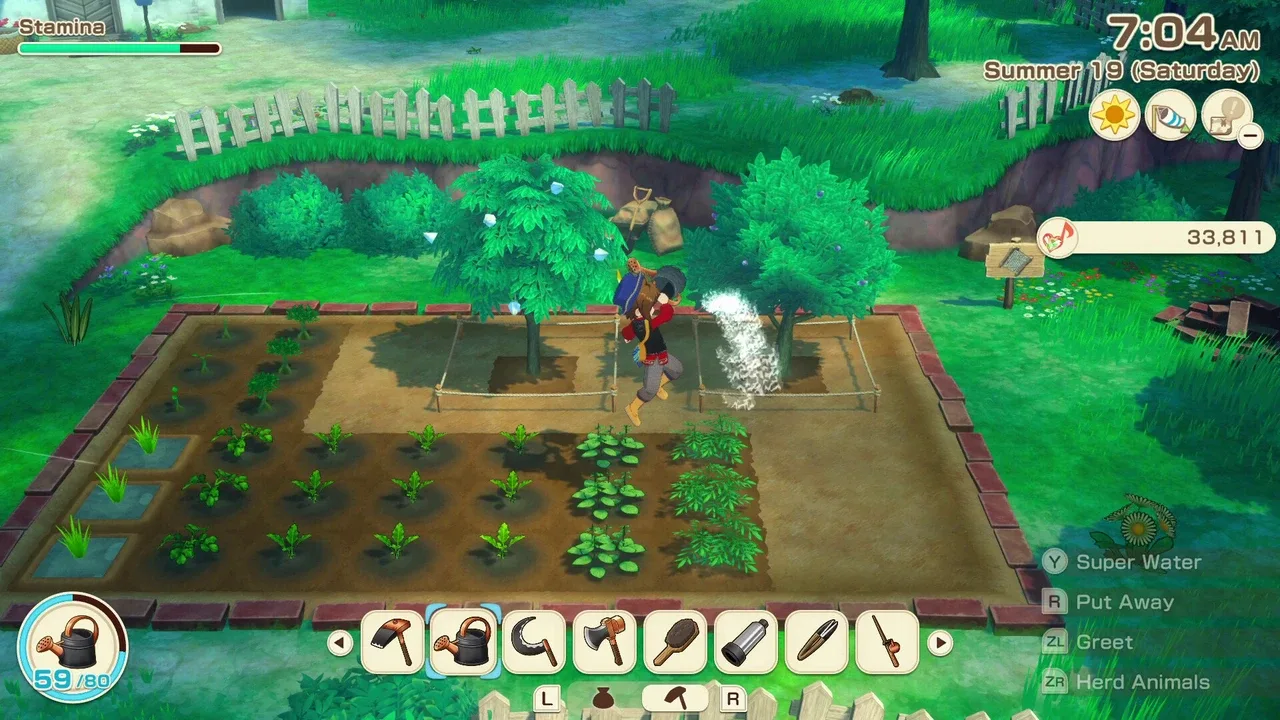
Processed goods are likewise beholden to heavier limitations than a lot of other games. All processing is done at Zephyr Town’s three windmills, each of which has its own set of products—only the red windmill can make flour, only the blue windmill can make seeds, only the yellow one can process rare animal byproducts, and so on. Each windmill can only have six different items processing at once, and a maximum of 10 per stack, so you need to be selective about what you queue up at any given moment. Processing times vary greatly, too, and larger stacks take longer, so if you need something urgently, it might be better to run smaller stacks in tandem.
Again, it’s a very deliberate limitation that helps feed Grand Bazaar’s general play cycle and adds an interesting degree of strategy. Just mindlessly processing everything you can will very quickly see you hit a wall, but thinking strategically about what your priorities are in both the short term (what do you want to sell at the next bazaar) and the long term (upgrading tools, preparing items for quests, getting seeds ready for the next season) will see your farm flourish.
Finally, there are all the other stalls at the bazaar. This weekly event is your only chance to buy upgrades for your farm and house, adopt new animals, and buy certain essential items. A general store and a small cafe are the only shops in Zephyr Town outside of the bazaar; they sell a small assortment of essentials, but most of the good stuff can only be bought on a weekly basis. The result? A game loop where bazaar day is the day to sell as much as you can, then immediately dump those profits into getting as many upgrades, animals, and rare goods as you can afford. Unless you’re trying to save for something specific, there’s rarely a good reason to just sit on a pile of riches. Sell high, buy big, and then don’t think about money again until the next bazaar.
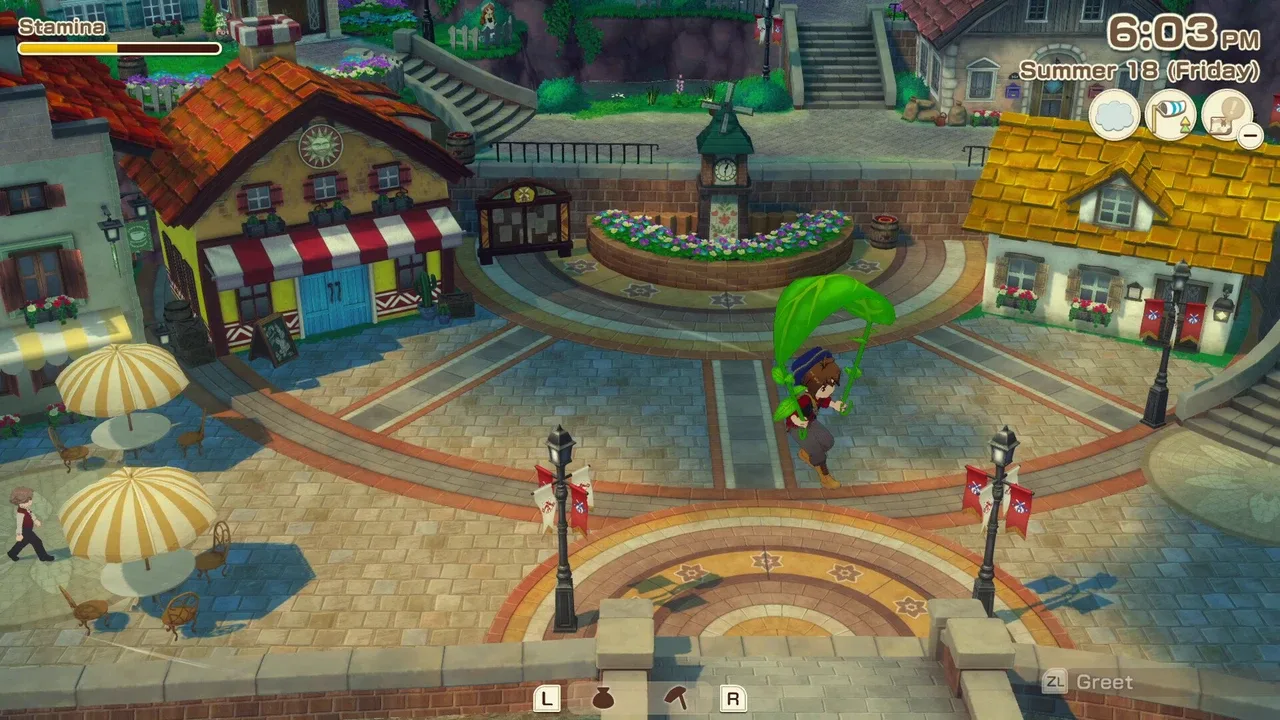
It’s an unusual dynamic for a Story of Seasons game, but the way all these different systems and artificial but intentional constraints fit together make it all work wonderfully—for the most part. The one caveat here is a sense of diminishing returns in the late game. The bazaar loses some of its steam once you run out of things to buy and money stops being much of a factor, which in turn upsets the delicate balance and makes those constraints feel more… well, constraining. There’s still stuff to do after the credits roll, especially if you’re a completionist, from fully upgrading your tools with rare materials, to maxing out the quality of your crops. But the bazaar—such a defining aspect of the game up to that point—becomes more of a sideshow, and the game’s flow falters as a result.
The other side of any Story of Seasons game, of course, is the social element. Grand Bazaar doesn’t rock the boat at all in this regard, sticking close to the tried and true setup of light relationship management and regular festivals as a way of encouraging you to connect with the townsfolk. Unfortunately, the festivals are forgettable, with most falling into one of two categories: give items of a certain type to townsfolk as gifts, or present your best crops/animals/cooking for a competition. The few exceptions to that formula are very basic minigames (press button when prompted to make a pet do tricks) or simple cutscenes that aren’t worth watching more than once. It’s a bit of a shame, because good festivals can be a wonderful way to mix things up.
On the other hand, the residents of Zephyr town are a delightful bunch. They all strike just the right balance between cartoonish and relatable, and the stories that unfold as you get to know them are genuinely heartwarming. This goes across the board, too, from the love interests who typically get the most attention to relatively minor characters—they’re all fleshed out and carrying their share of complexity, even within the space of a handful of cutscenes for each character. The love interests are a particularly captivating bunch this time round, in terms of both their visual design and the personalities that you get to watch develop. I think this is the first Story of Seasons game where I’ve struggled to settle down because I just can’t choose who I like best… I want to marry everyone.
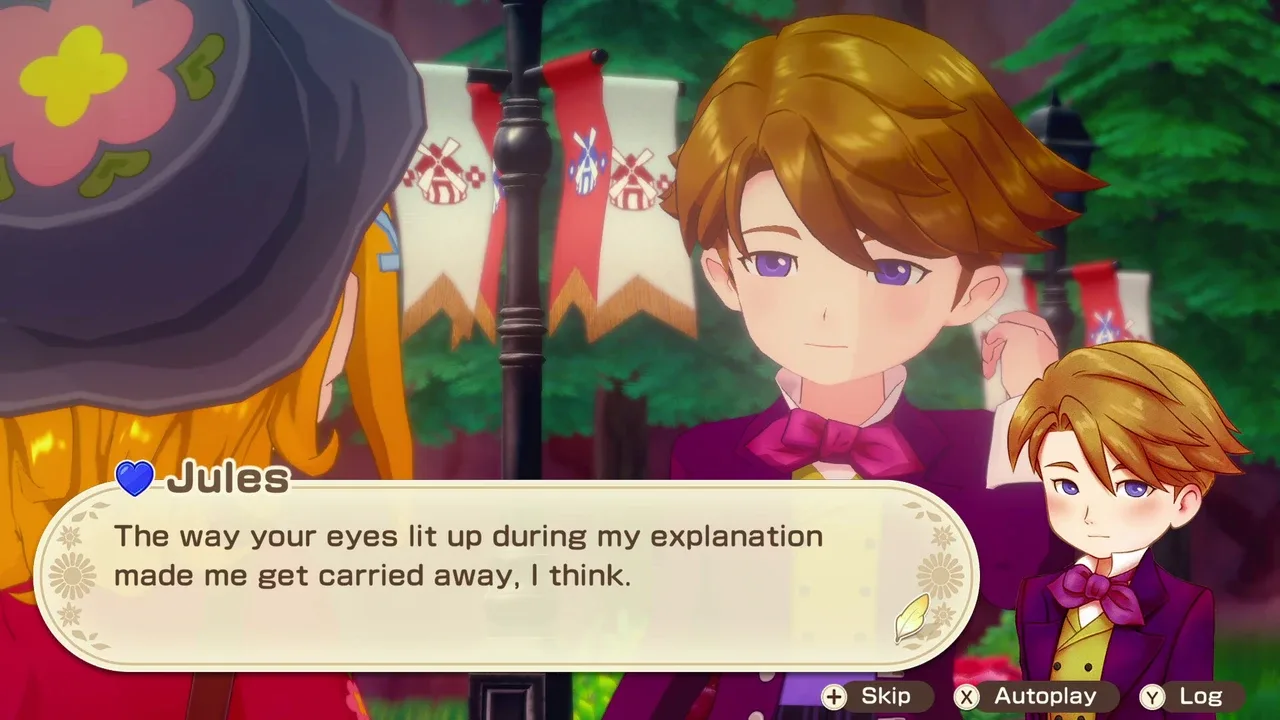
Vibrant presentation rounds out the package, with the colourful art style of the original Harvest Moon DS: Grand Bazaar brought vividly to life in the remake. Zephyr town is small but a joy to explore, thanks in no small part to a warm, inviting atmosphere carried by the art direction. It really pops on the Switch 2 screen, too.
All of this makes Story of Seasons: Grand Bazaar an easy game to recommend. The clever reimagining of a farm life sim by way of the weekly bazaar is a refreshing change of pace, coupled with one of the most loveable casts in Story of Seasons. There are few things quite like the comforting routine of a good farming game, and even with some minor shortcomings, Grand Bazaar scratches that itch wonderfully.
Reviewed on Nintendo Switch 2 with a review code provided by the publisher.

